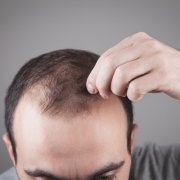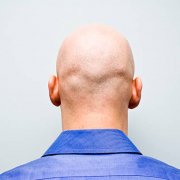Progression of Hair Loss in Men
All men progressively lose their hair to some degree as they get older. For some, it is barely noticeable, but for others, it can be quite obvious. Hair loss can be particularly distressing if it is severe, if it comes out in patches, or if it occurs at a young age.
There are between 100,000 and 150,000 hair follicles on the scalp – which is a relatively small number in comparison to the approximate 5 million follicles covering the rest of the body. Each hair follicle goes through a natural renewal cycle, which includes a hair growth stage (anagen), a stage of active hair loss (catagen), a rest stage (telogen), and then back to the growth stage again.
A healthy scalp will on average lose up to 100 hairs per day. However, hair can start to thin if the rate of hair loss exceeds that of new hair growth. Let’s talk about how male pattern baldness is categorized and who you can talk about repairing your own hair loss.
How the Norwood Scale Measures Male Hair Loss
The Norwood scale is used to classify the stages of male-pattern baldness on a scale of 1 to 7, and it can be used to assess the severity and progression of hair loss:
- At stage 1, there is no significant hair loss or recession of the hairline.
- At stage 2, there is a slight recession of the hairline at the temples.
- Stage 3 is when the hairline becomes deeply recessed at both temples, and may resemble an M, V, or U shape. The recessed areas appear either completely bare or sparsely populated with hair.
- Stage 3 vertex is where the hairline stays at stage 2, but there is noticeable hair loss on the crown of the head (the vertex). This often starts as one small bald
- By stage 4, hair loss is significant. The recession of the hairline is more severe than at stage 2, and there is little to no hair on the vertex. The two areas are separated by a band of hair in between the forehead and the balding vertex.
- At stage 5, the areas of hair loss become larger and the band of hair between the two areas becomes narrower and sparser.
- Stage 6 sees the balding areas at the temples join with the balding area at the vertex. The band of hair disappears or becomes very sparse.
- Stage 7 is the most advanced stage of male-pattern hair loss, with only a band of hair around the bottom and sides of the scalp. Any hair that does grow is often thin and weak.
- Class A is a much less common progression of hair loss, where the hairline recedes directly from front to back without a bald spot developing at the vertex.
Hair Restoration in Kansas City, Liberty, and Des Moines
If you have male-pattern hair loss or progressive hair loss, Darling Hair Restoration can help. Hair transplant surgeon Dr. Scott Darling is a leading hair restoration specialist who can evaluate and diagnose your hair loss and offer a treatment solution that is right for you.
For more information about our services or to book a consultation, call us today at (816) 792-3400 or fill out our convenient appointment request form online now. We look forward to helping you look and feel younger and more vibrant again.










